Working with Mirrorless Cameras
The globe-trotting, equipment lugging, moment-gathering photographer and the eternal quest on how to make life easier. This is the dilemma for both the aspiring photographer and the working professional, reducing the footprint (weight and size) but not the quality of the image.
As the technology in digital photography makes huge strides, the life of the photographer should be made easier. The sensor technology is amazing today, and quality of images has never been higher. Also, speed of the gear is fantastic and shooting high frame rates with almost no slow down allows the digital photographer to stay with the subject until they are able to capture the moment.
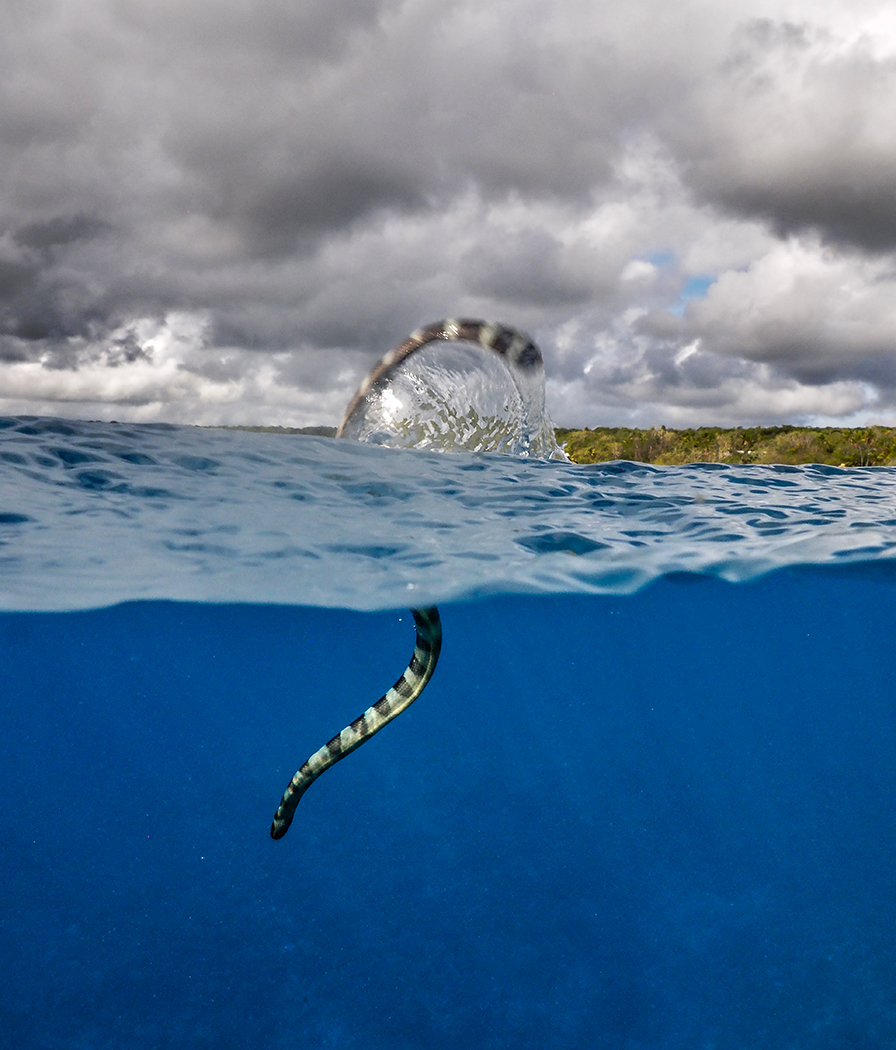
Banded sea krait, Niue, South Pacific Olympus E-M1, 7-14mm f2.8
However, the bane of the photographer continues to be the weight and massive size of today’s DSLR cameras. Carrying a modern single lens reflex can become an aerobic activity: 4-5 pounds of camera with a lens the size of a cricket bat does not necessarily incentivize the photographer to carry that gear for extended periods. It’s not only the weight; in many places the last thing I want to do is carry, and exhibit, large and obviously expensive gear. The smaller “equipment footprint” I can make, the more I can disappear into the background. Large and cumbersome cameras can “intrude” on a situation-I’d rather be invisible as a photographer in many shooting environments, and most of today’s DSLR cameras take this possibility into the other direction. Working in many locations (both domestically & abroad) the more I can look like a tourist, not a pro the better, along with lessening the chance of theft or other negative happenings.
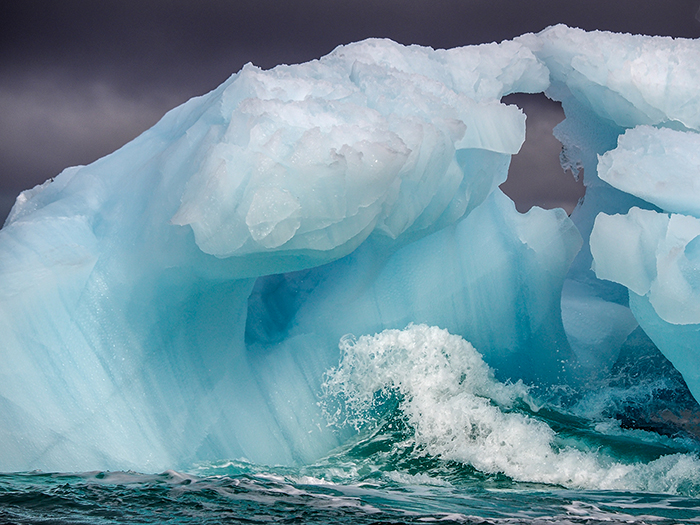
Wave breaking in front of iceberg, Canadian Archipelago E-M1 50-200mm
There is a new paradigm in camera equipment today: younger photographers are essentially NOT carrying heavy & cumbersome DSLR cameras anymore. I think in part because they’ve grown up with cell phones as their image making gear. Another appealing aspect of the mirrorless systems, as their footprint and ergonomics are so much less intrusive than DSLR cameras.
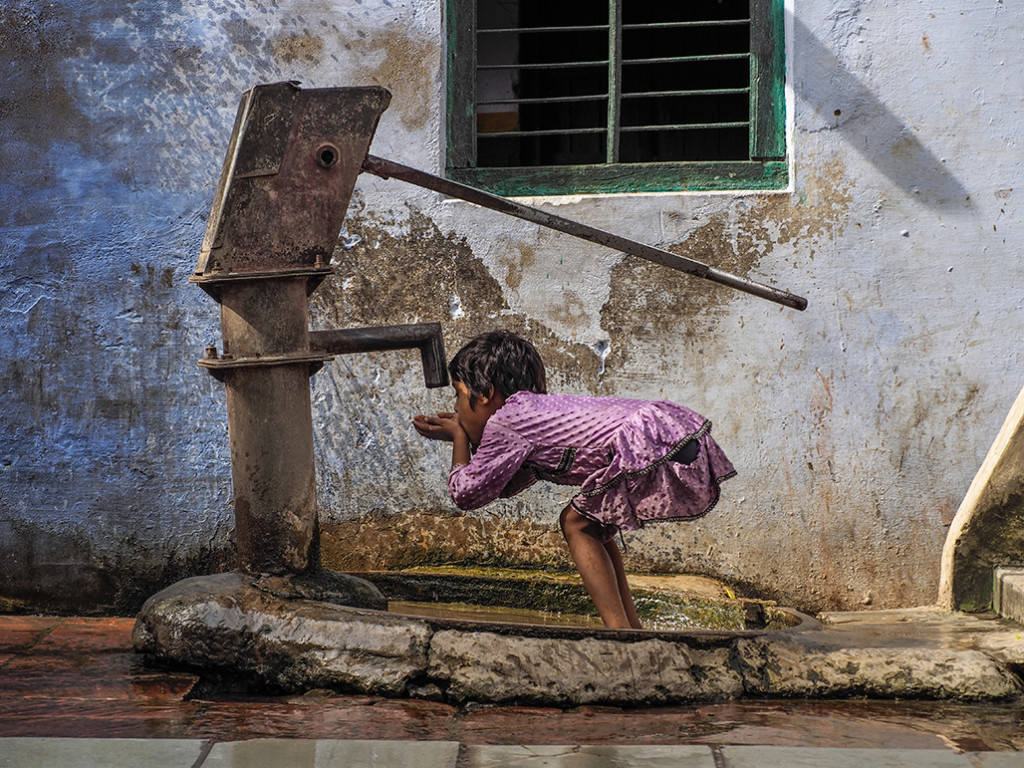
Water pump, Kachhpura village, India Olympus E-M1 40-150mm f2.8
I’ve been shooting with the Olympus OM-D system since its release in 2012. This is one of the mirrorless cameras, called so as the mirror “box” has been eliminated and replaced with an electronic viewing system. The most obvious benefits of this design are less weight and smaller size which equals more ease in carrying. As the thought goes, what is the best camera to own? The one that’s in your hands when you need it. And, by creating this very light-weight system, the camera is most often with me when those photographic opportunities arise.
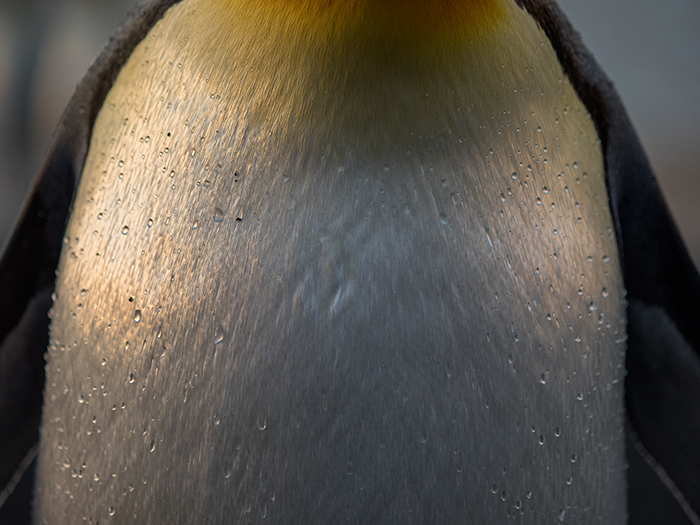
King penguin breast feathers, Gold Harbour, South Georgia E-M1 50-200mm
Add to this formula the sensor size of the “Micro-Four Thirds” system, adopted by Olympus and other companies in the Micro Four Thirds consortium. Lenses also become much, much smaller due to a sensor about half the size of a full sensor camera. This allows the lenses not only to be much smaller, but effectively “doubles” their effective length. (We still use the 35mm equivalence as the measurement formula for thinking about lens-length.)
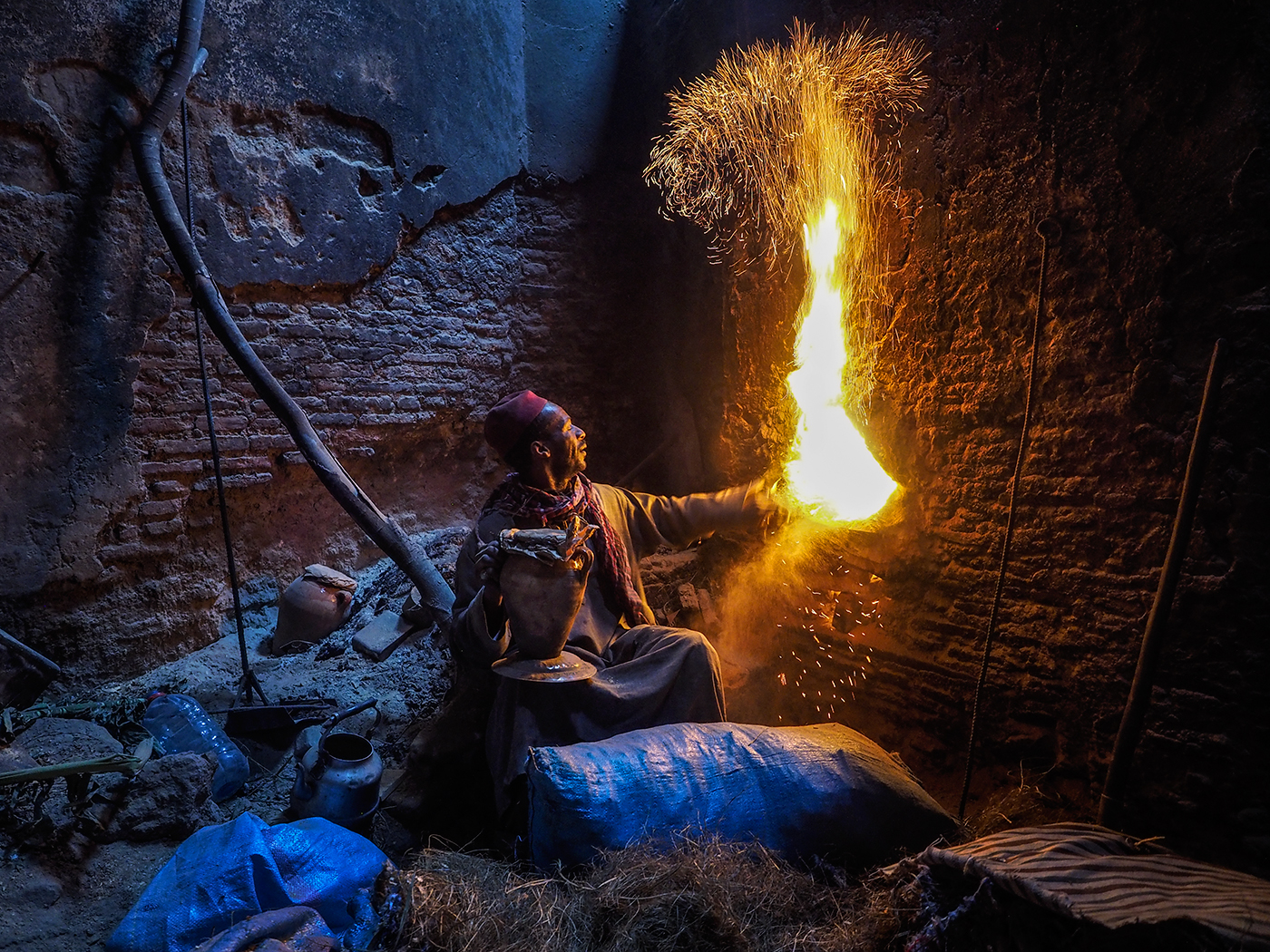
Marrakech, Fanatchi furnace fueler E-M1 12-40mm f2.8
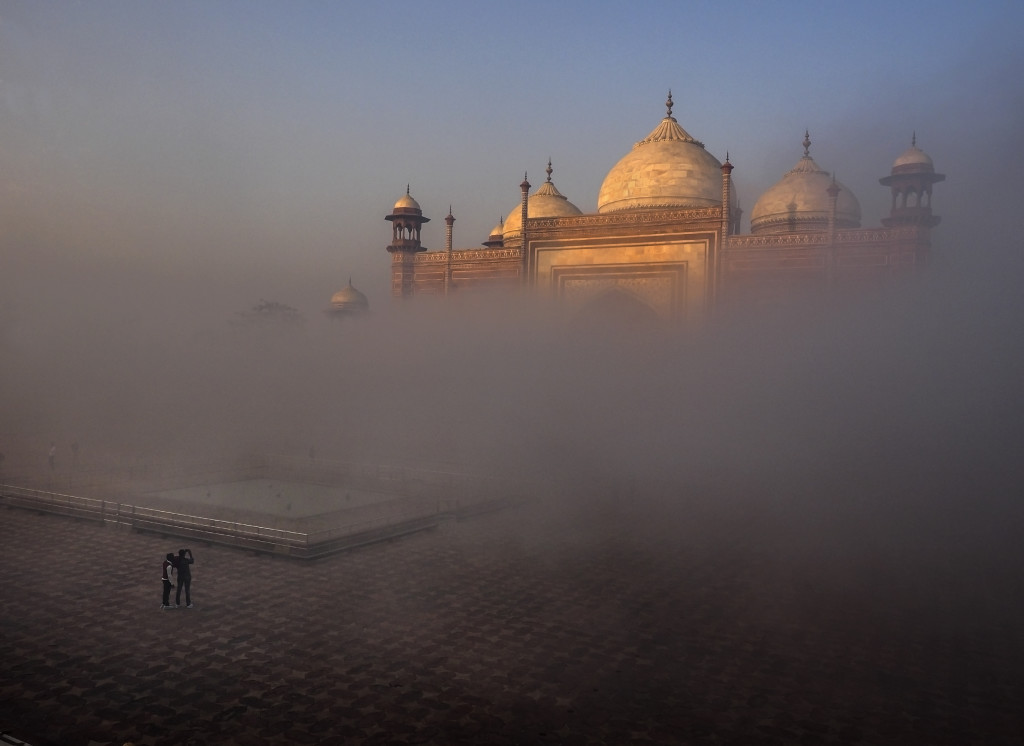
Side mosque near the Taj Mahal E-M1 12-40mm f2.8
Much of my work these days is with National Geographic Expeditions, Workshops and Adventures, which often involves global travel to places far off the beaten path. My requirements/preference for equipment is heavily based around extremely-high quality, portability and light weight. Travel today, if you haven’t noticed, can often involve minimal space on aircraft, gate agents who don’t follow the “international carry-on regulations,” and a fight for what little space is available on that aircraft. The photographer really has to either minimize the size of their equipment, or be prepared to bid adieu to their roll-aboard at the gate and hope (pray) that it not only makes it to the destination, but that it makes it to the destination in working order.
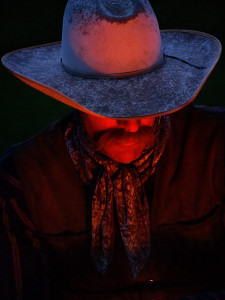
Buck, Dubois, WY E-M5 14-150mm
When I work, I always carry two cameras: one with a wide-angle zoom, the Olympus 12-40mm & the other with a telephoto zoom, the 40-150mm. Both these lenses are quite fast, f2.8 throughout the range, which allows me to work in all sorts of lighting conditions, varying from bright to minimal available light.
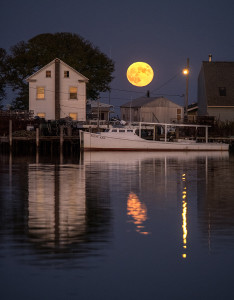
Full moon, Smith Island E-M1 40-150mm f2.8
By doing this I’m actually minimizing the amount of gear I carry. Instead of a bag full of optical choices (lenses) I use these two lenses to accomplish almost all my photography needs. If a specific wildlife or sports shoot, the dynamic does change and I’ll use the appropriate super-telephotos for those assignments. But, these two lenses really allow me to work almost any situation, and by not having the weight of an accessory bag on my shoulder, I’m able to move and react much more quickly to just about any photographic situation.
I shoot primarily for publications that demand the utmost quality of the image, but the newer photographer is also looking for high quality images. Whether posting on a photo-sharing site, publishing ones own book or printing to hang on the wall, celebrating your latest adventure, the smaller camera is much more likely to be in your hands when opportunity knocks!
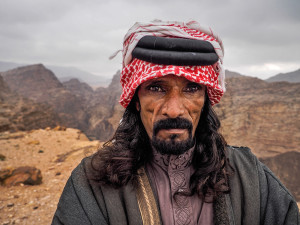
Bedouin, Petra, Jordan E-M1 12-40mm
Also -check out “My Shot”, which is a photo sharing site hosted by National Geographic. This site provides a monthly theme/assignment to all participants. It’s a creativity inspiring process, as many photographers submit images (3 per month) to the site, which are then edited down to a select group and published in a layout on the website. http://yourshot.nationalgeographic.com
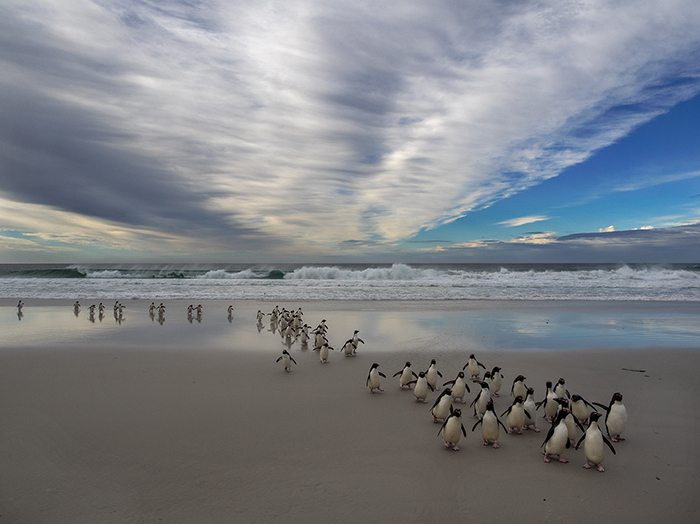
Saunders Island, Falklands (Malvinas) E-M1 12-40mm
Quality is amongst the top criteria for my equipment as well, and I’ve found that this system can deliver files that allow me to print to quite large sizes, up to 30 x 40”. Images of the quality required for publication are easily accomplished, as I shoot RAW exclusively. I’ve also found that, to achieve the best image, the proprietary RAW reader really gives me the ultimate quality. Shadow detail and highlights seem to be those areas most benefitted by the manufacturer’s software. I’ll open the images in my camera’s proprietary software and immediately export that image as a 16-bit TIFF. I’ll either import that into Lightroom, or use Photoshop to open that image as a Camera Raw. This provides me access to the highlights and shadow tools, allowing me to pull in available info in the bright areas or open up the shadows.
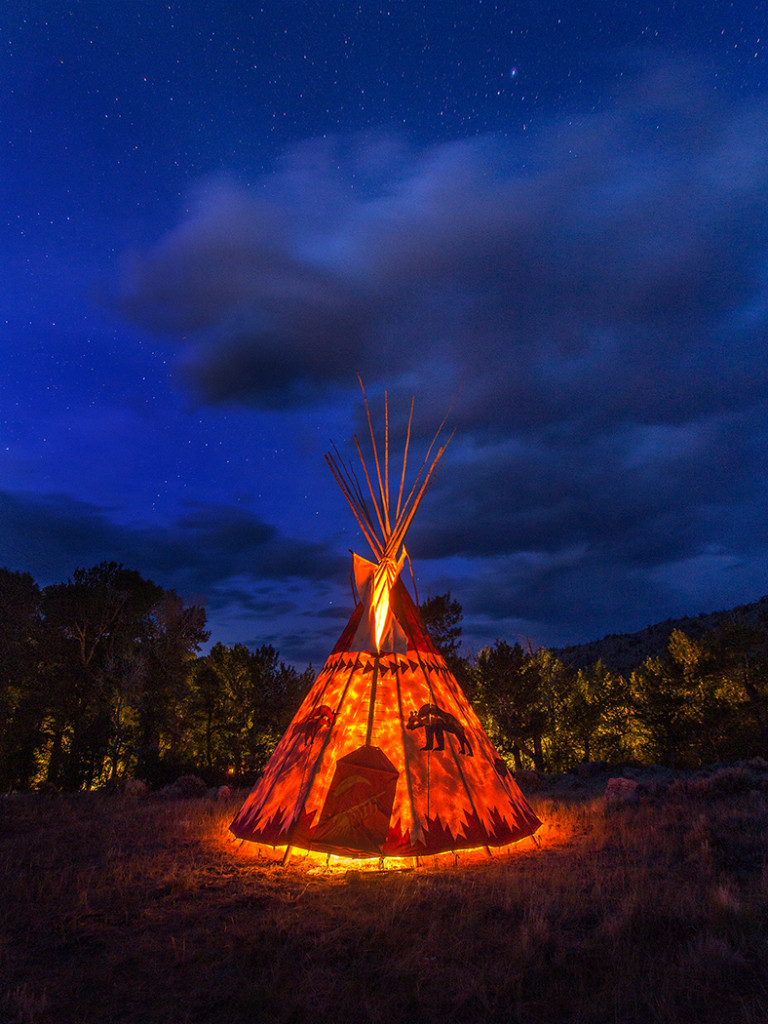
CM Ranch, Dubois, WY E-M1 9-18mm
Take a look at the images posted here, all shot with my Olympus OM-D mirrorless cameras and I think you’ll agree that the quality shines in these images, and they are very realistic for so many types of coverage.
I’m actually heading off soon for a FirstLight photo tour in Namibia, in my ThinkTank Airport Commuter Backpack (we are limited on weight, as well as no “wheelies” on this trip) I’m carrying: three OM-D E-M1 bodies, a bunch of batteries, a flash and these lenses: 8mm f1.8, 7-14mm f2.8, 12-40mm f2.8, 40-150mm f2.8 (along with the MC-14 1.4 teleconverter) and the just released 300mm f4. In addition to my Singh Ray filters, Acratech ballhead and Lexar memory. So, I am covered, in the 35mm equivalent, in lenses ranging from 16mm out to 840mm. I weighed the bag – under 20 pounds.



